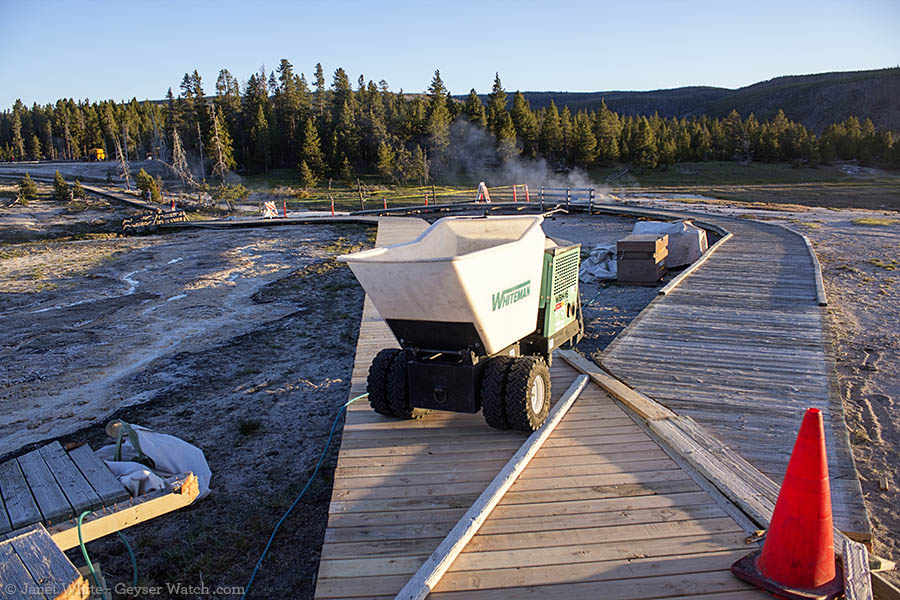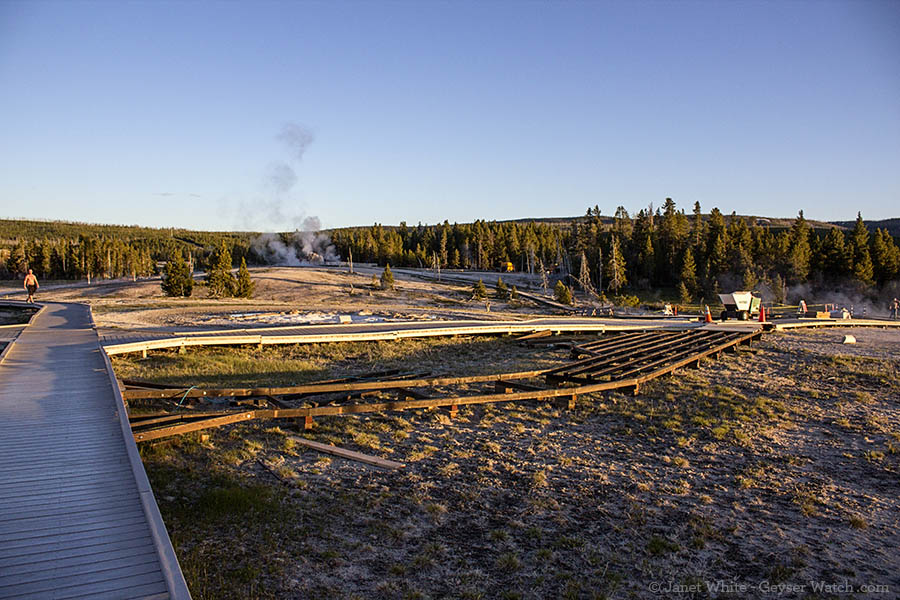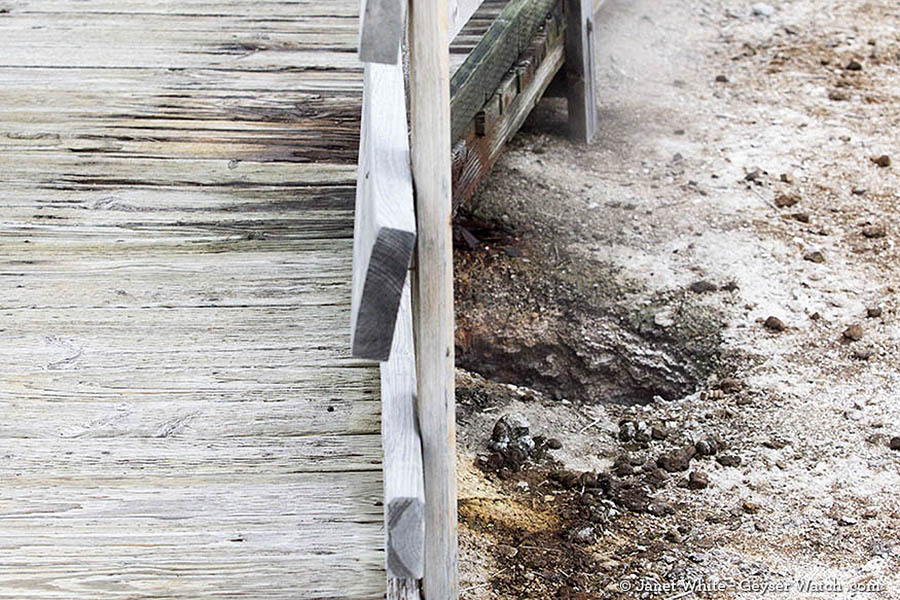
Crews are working to repair and move boardwalks in the Upper Geyser Basin in Yellowstone National Park. (Janet White/GeyserWatch.com)
By Janet White
Yellowstone National Park’s geyser basins see constant shifts and changes. New features heat up while others cool down. This is a normal process in the geyser basins and is monitored using a range of advanced technologies, allowing the National Park Service to take action to mitigate the situation.
In the Upper Geyser Basin, a hot spring across the boardwalk from Scallop Spring (just across the bridge by Castle Geyser) has gradually expanded to the point where the heat from it now weakens the wood of the boardwalk above it. Other areas of hot ground have been detected nearby as well, and the decision was made to move the boardwalk away from this increasingly unstable ground.

The base of a new boardwalk structure is visible in the foreground. (Janet White/GeyserWatch.com)
The boardwalk remains close enough to watch and see how this area changes. A new hot spring or two may develop, or the energy may shift elsewhere. Underground changes could produce another area where it may appear safe to walk, but the overlying crust of minerals is actually quite thin. It’s a good reminder of why people are asked to stay on the boardwalks.

Heat, moisture and shifting earth can quickly destabilize boardwalks in Yellowstone. (Janet White/GeyserWatch.com)
Park officials say work on the new boardwalk and removal of the old boardwalk should only take a few weeks, and won’t cause any closures to boardwalk access to thermal features in the area.
Janet White is the creator of GeyserWatch.com and appreciates any reports on unusual or interesting activities by Yellowstone Park thermal features.
